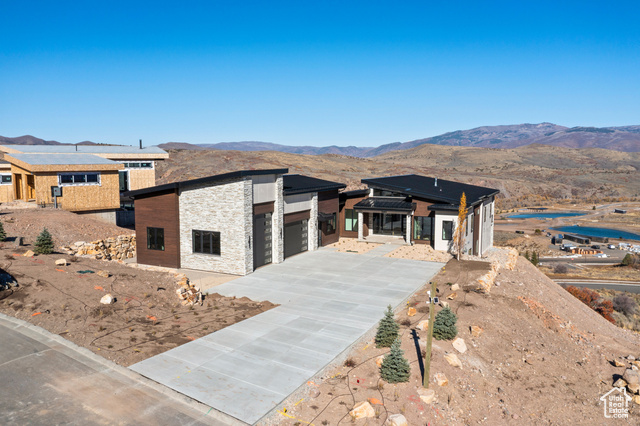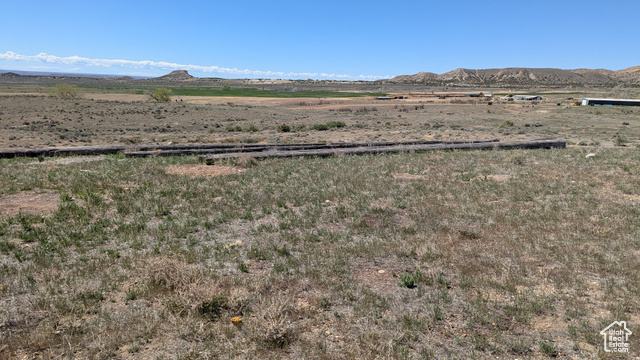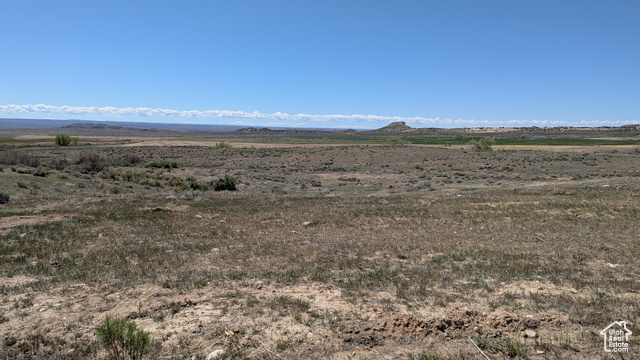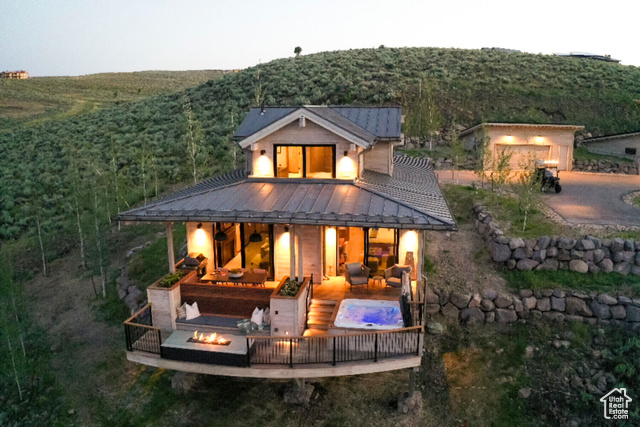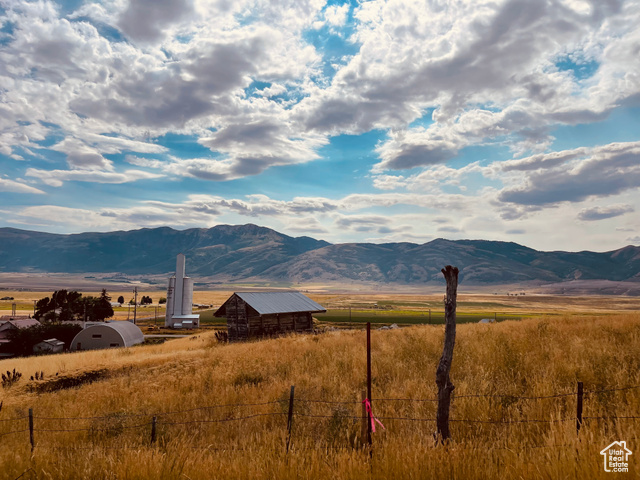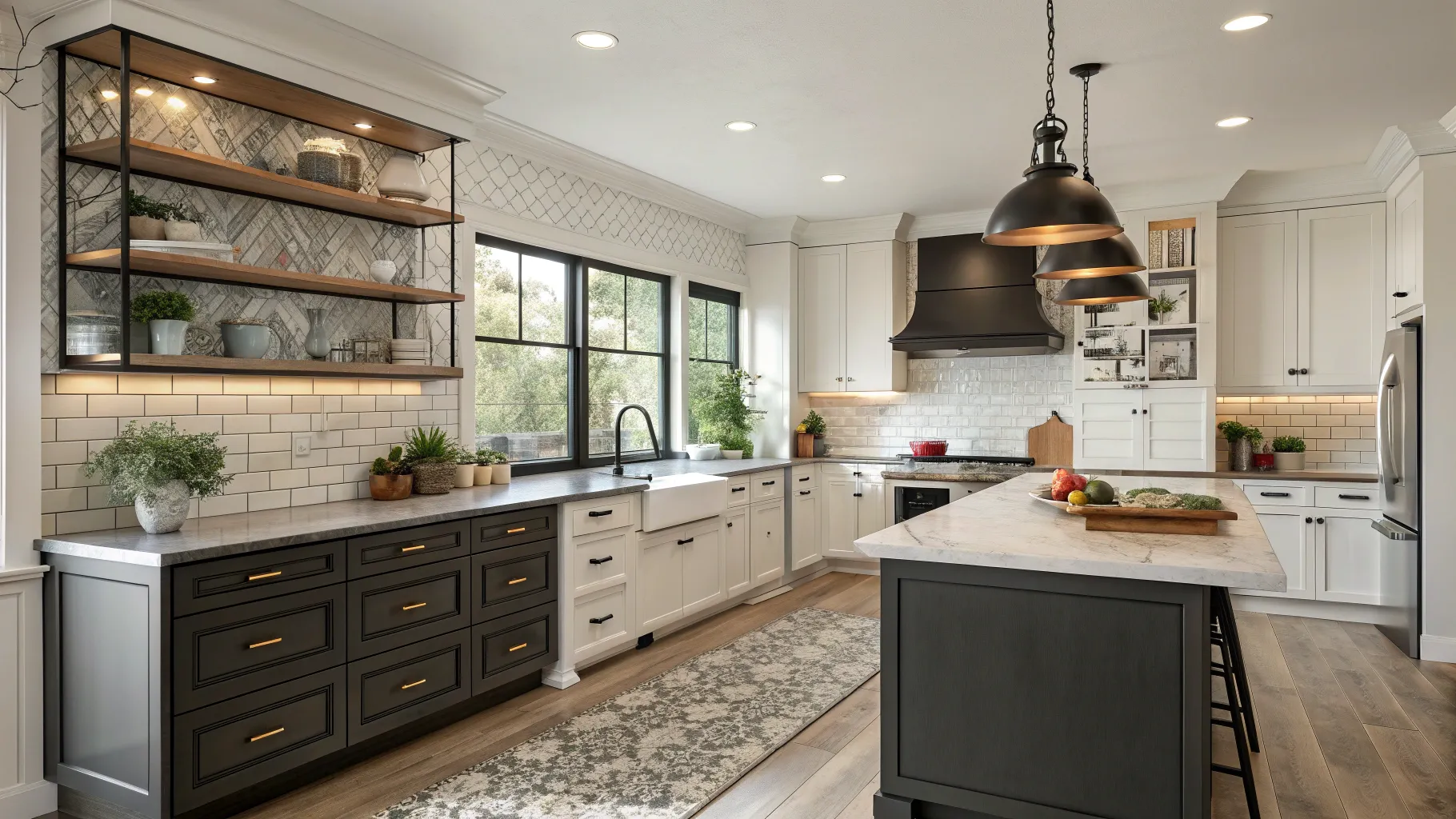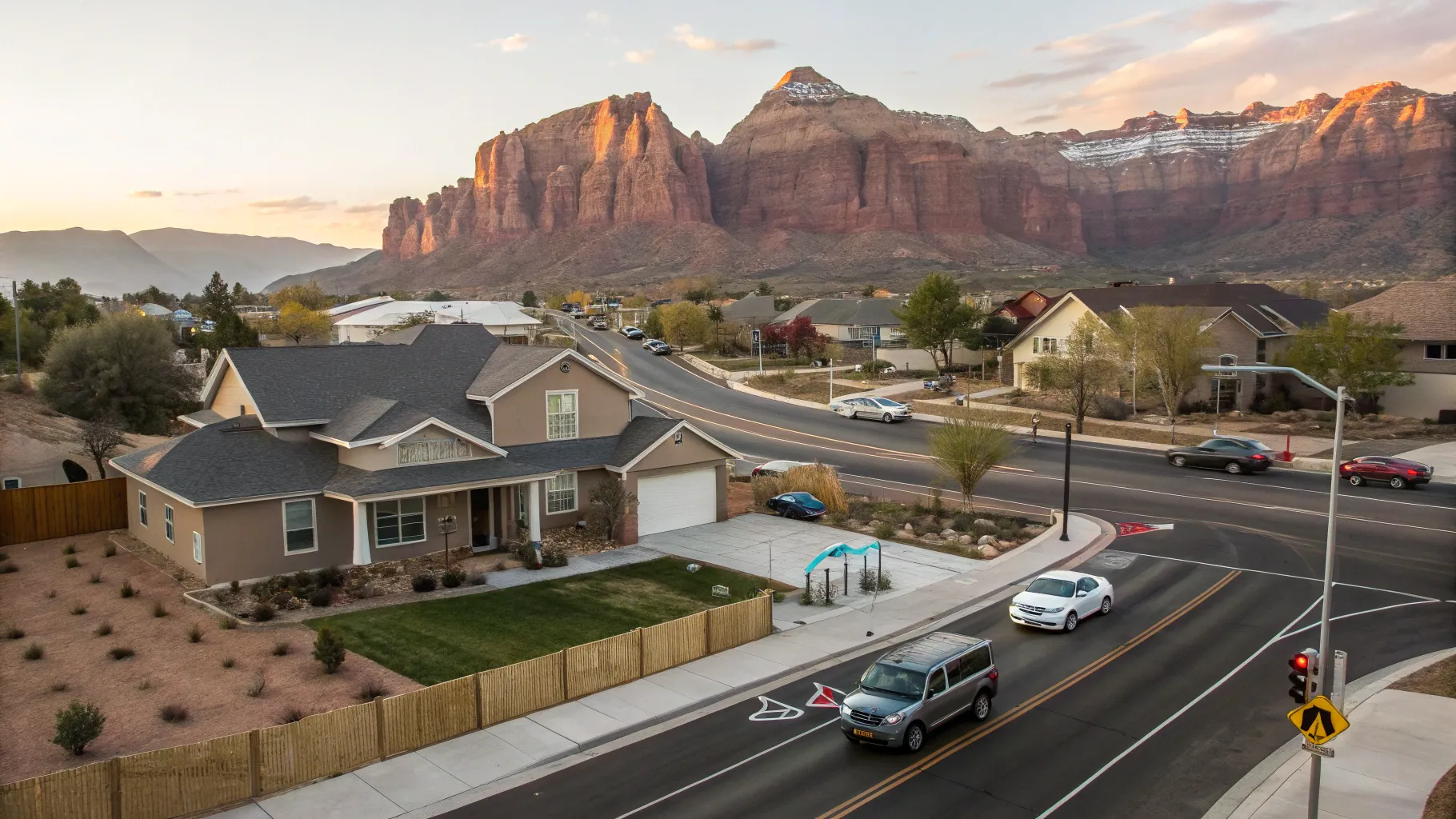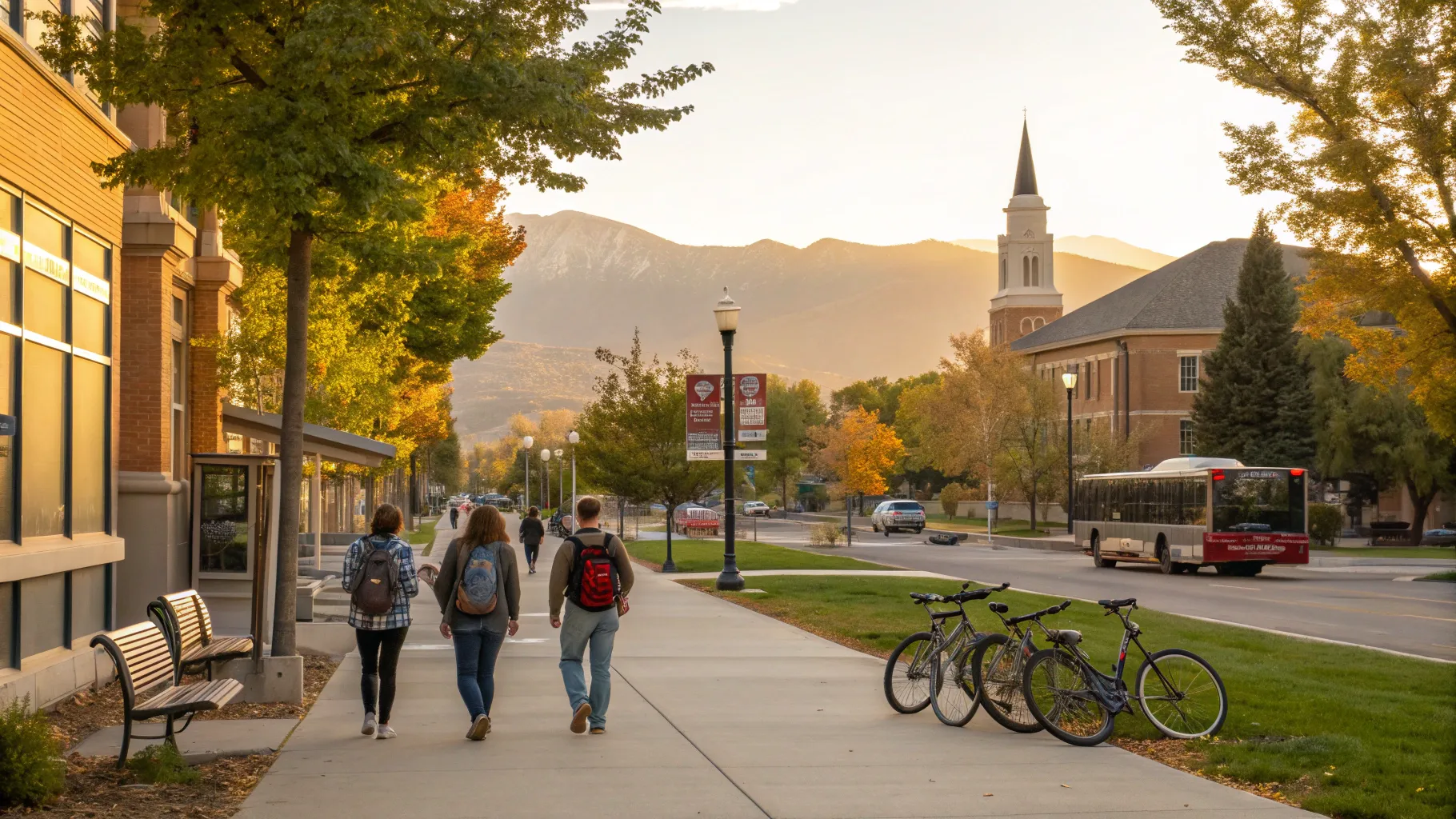Avoid five kitchen trends that can hurt resale value in 2026. Utah-focused alternatives, budgeting tips, and material guidance for Salt Lake, Park City, and St. George homeowners.
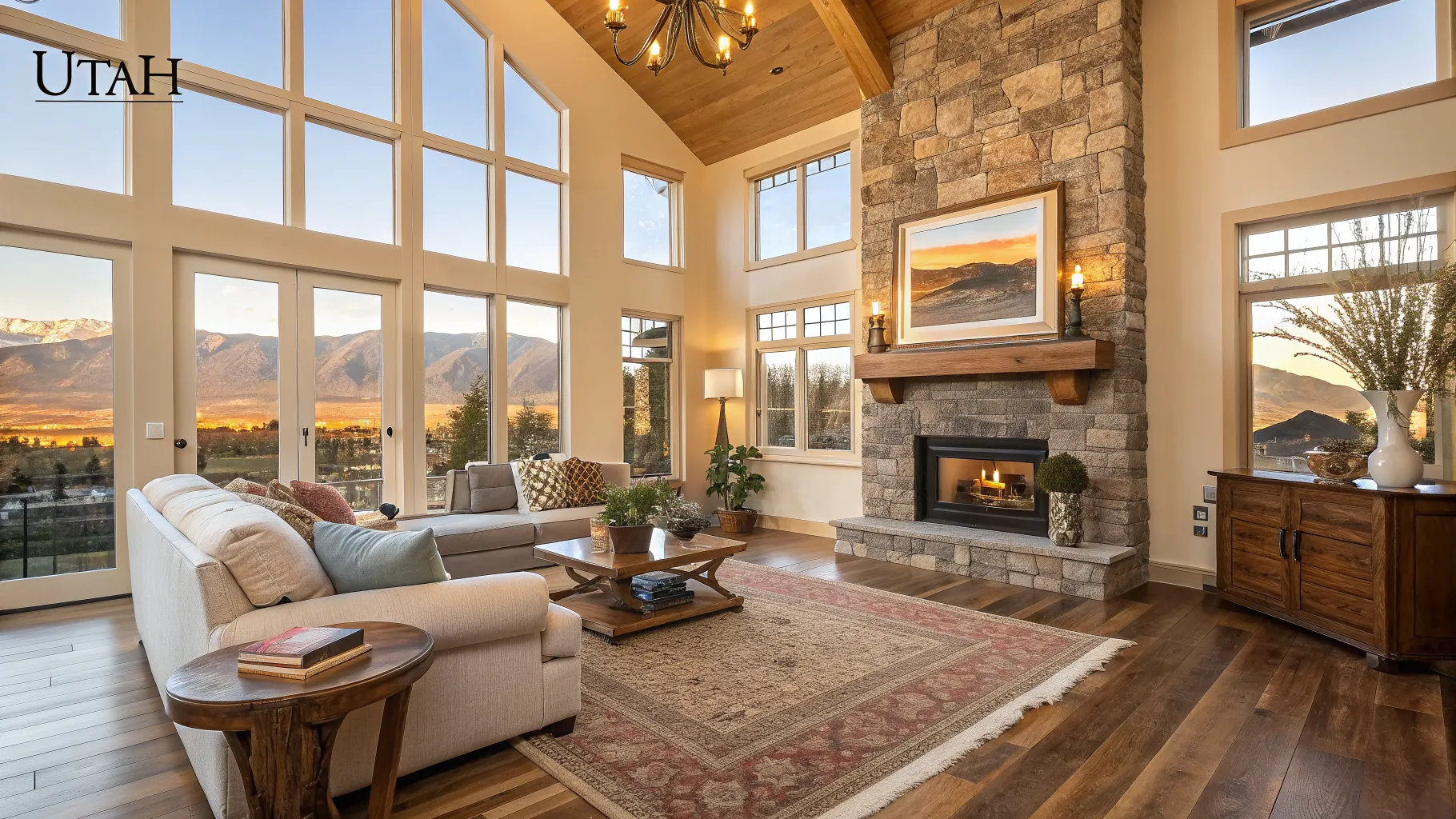
Utah homeowners, buyers, and investors face a unique mix of design demands. Mountain light, wide seasonal swings, and evolving neighborhood aesthetics influence how interiors and exteriors age, show, and sell. As design preferences shift entering 2026, several high-profile trends are receding. This article identifies five trends that no longer serve longevity or resale in most Utah contexts and offers tactical, regionally minded alternatives that add warmth, curb appeal, and timeless value.
The intent is practical: preserve resale value across Utah markets, avoid frequent costly renovations, and create homes that feel inviting year-round. Advice focuses on materials, finish choices, lighting strategies, and color direction suited to Utah climates and buyer expectations. Where renovation decisions intersect with resale strategy, guidance is framed to help owners and prospective buyers make informed choices rather than chase ephemeral looks.
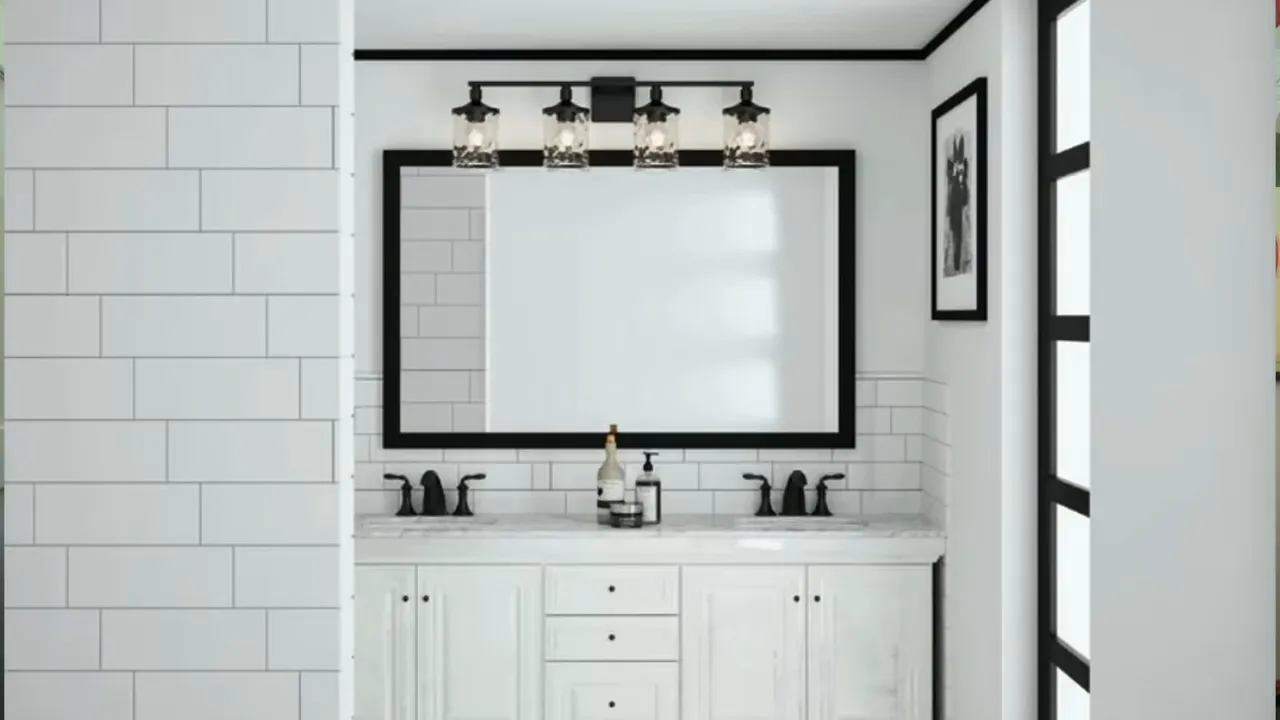
Why trends matter to Utah homeowners and buyers
Trends influence what gets specified in new builds and what buyers expect when touring homes in Salt Lake City, Park City, St. George, and surrounding communities. However, following every trend can create regret, especially when the trend is widespread across neighborhoods. When a finish becomes ubiquitous, it risks dating the home—making it obvious that a property was built or renovated during a particular style cycle.
For Utah properties, the stakes include local resale comparables, homeowner association rules in master planned communities, and material performance under strong sun, dry heat, or snowy winters. Selecting finishes and treatments that balance current taste with tested longevity means fewer renovations, less turnover in tenant-occupied properties, and more competitive listings across diverse Utah neighborhoods.
Outline
- Trend 1: Stark, high-contrast black and white interiors
- Trend 2: Flat black plumbing fixtures
- Trend 3: Stark white walls
- Trend 4: Black and white exteriors
- Trend 5: Overuse of recessed lighting
- Regional alternatives, maintenance and staging tips for Utah homes
- FAQs addressing practical homeowner questions
Trend 1 — Stark interiors: why high-contrast minimalism is losing traction
High-contrast black and white interiors dominated a wave of new construction and renovations, often portrayed as modern, crisp, and visually striking. Yet in many areas of Utah, that ultra-minimal, graphic approach undermines the sense of warmth that buyers value. Stark interiors create sharp visual boundaries where gradual, soothing transitions would better support day-to-day living.
In Utah markets where indoor-outdoor living matters, such as homes near the Wasatch Range or in southern desert communities, tonal warmth and layered textures make interiors feel inviting and authentic. Harsh contrasts can emphasize imperfections and make daylight look colder. For families and long-term occupants, the goal is a space that reads as collected and comfortable rather than showroom-pure.
Practical alternatives:
- Introduce layers: woven rugs, linen drapery, textured throws, and soft upholstery to break graphic contrast and add visual warmth.
- Soften transitions: instead of black frames and stark white walls throughout, select deeper neutral trims or warm off-white millwork that create a gentle progression between rooms.
- Choose finishes with temperament: matte warm metals and soft wood stains moderate contrast while retaining modern lines.
- Add color accents: consider green, terracotta, or muted blue as small focal colors that humanize a monochrome palette and are easy to change during staging.
For staging a Utah property, moderate contrast enables light to play across surfaces without producing the cold, clinical impression that can deter buyers who crave cozy mountain or desert retreats.
Trend 2 — Flat black plumbing fixtures: reconsidering a popular finish
Flat black faucets and plumbing fixtures surged into mainstream specifications for kitchens and baths. Initially perceived as a timeless neutral, the heavy, attention-grabbing appearance of black finishes often competes with other elements rather than allowing finishes to integrate gracefully.
In Utah homes, where finishes need to perform visually under bright natural light and indoors under lamp light during long winter nights, a few considerations matter:
- Durability and maintenance: matte black finishes can show mineral buildup and wear from hard water more noticeably than other finishes. Many Utah regions report mineral-heavy water that requires routine cleaning, which can accelerate visible wear on matte surfaces.
- Integration with surrounding finishes: black has a forward, show-stopping quality. When paired with multiple other high-contrast elements, bathrooms and kitchens may read as trend-forward rather than timeless.
- Resale preference: buyers across Utah markets vary, but many prefer finishes that blend with a range of styles—silver, polished nickel, and warm brass often integrate more neutrally across cabinetry, appliances, and lighting.
Recommended adjustments:
- Prioritize warm brass or aged brass as primary accents in kitchens and baths. These finishes warm up spaces and coordinate with wood tones and earthy paint choices prevalent in Utah properties.
- If black is already installed, introduce warmer textiles and wood surfaces to reduce the visual heaviness. Replacing small items like pulls and lighting shades is a low-cost way to change perception without a full renovation.
- For long-term installations, choose finishes with proven resistance to Utah water conditions; consider serviceable aerators and clear maintenance plans for listings and rentals.
Trend 3 — Stark white walls: when white becomes a liability
White walls became a dominant trend after years of gray and paper-bag browns. White interiors read as airy and bright, which appealed to many buyers. However, when white becomes the default in every neighborhood, it becomes a timestamp rather than a timeless choice. In Utah, where seasons alter tonal temperature dramatically, pure white walls can feel sterile in winter and glaring in summer.
Design professionals increasingly recommend nuanced, pale neutrals over stark white for everyday walls. These subtle creams and pale beiges—sometimes called complex creams—offer the flexibility of white finishes for kitchens and baths while providing depth and warmth to living areas.
How to choose wall neutrals for Utah homes:
- Consider undertones: identify whether a room benefits from warm or cool undertones based on sunlight direction, fireplace materials, and local landscape colors. West-facing afternoon sun in many Utah valleys favors cool undertones, while mountain light can bring out warm tones in interiors.
- Coordinate with core surfaces: if countertops and tiles are white, pairing them with pale neutral walls provides contrast without starkness. This approach maintains flexibility for future styling while avoiding a monolithic white canvas.
- Use the color wheel: matching the right neutral to upholstery and tile choices pulls a space together and creates a "designer was here" effect during showings and photography.
Sample strategy for kitchen and living areas:
- Keep durable white or cream surfaces for countertops and backsplash as timeless building blocks.
- Choose a pale neutral for walls that flatters furnishings and regional light. Examples include muted ivories, warm beiges, or soft stone grays rather than stark porcelain white.
- Update island color or accent walls with paint for seasonal refreshes—this is an economical way to modernize without structural work.
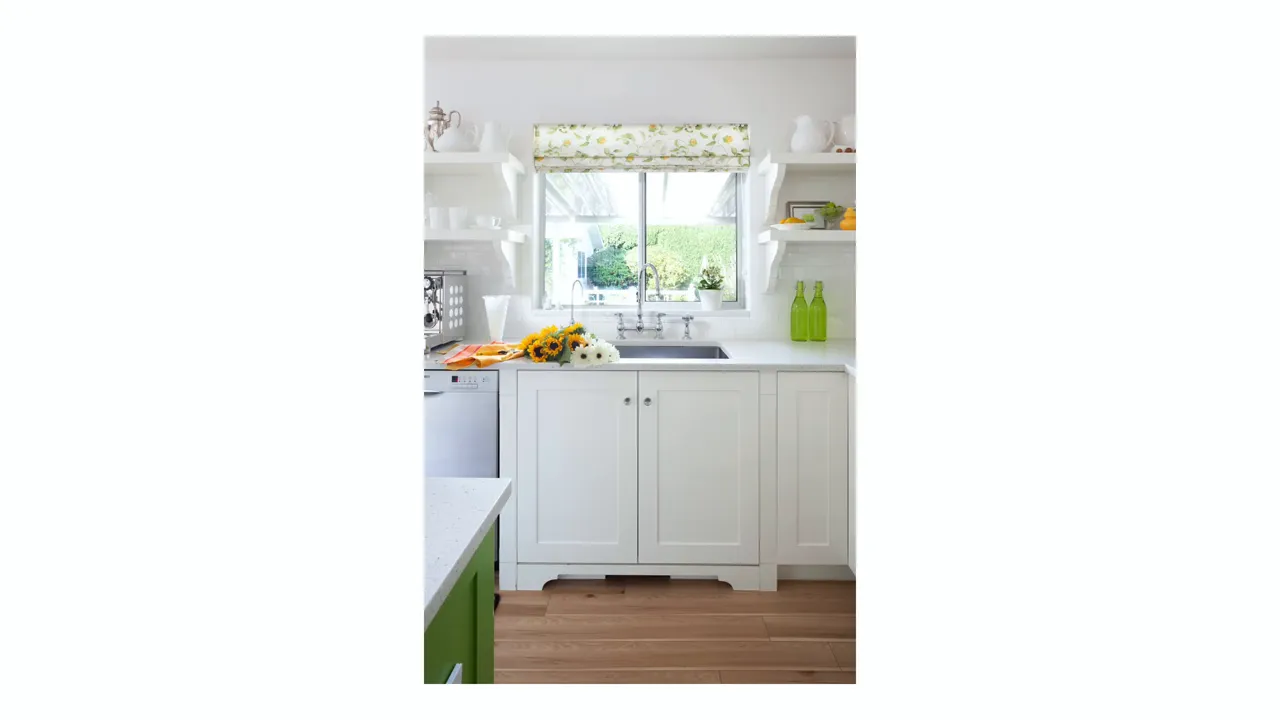
Trend 4 — Black and white exteriors: curb appeal considerations for Utah neighborhoods
Black and white exterior palettes became a shorthand for modern renovation looks. While dramatic, a uniform black and white streetscape across entire subdivisions reduces individuality and can mark a property as a product of a specific trend window. That may matter in Utah neighborhoods where buyers prefer harmony with local materials and landscapes.
Exterior paint choices are part of a home's first impression and can influence perceived value. On a hill in Salt Lake County or a desert tract near St. George, surfaces age differently under sun and snow. Dark cladding absorbs heat and can accelerate material wear in intense summer sun. Bright white highlights dirt and requires more frequent upkeep in dusty or snowy environments.
Guidance for Utah exterior palettes:
- Choose warm neutrals and muted colors that reference local geology and vegetation. Soft sage, warm taupe, and clay-inflected neutrals complement mountain and desert backdrops.
- Balance contrast: use darker trims sparingly to accent architectural features rather than applying a full black-and-white box treatment. Subtle contrasts weather more gracefully and broaden buyer appeal.
- Pay attention to materials: natural stone, cedar, and metal accents provide texture and longevity. Natural materials often perform better than stark painted surfaces when evaluated for long-term maintenance in Utah climates.
If a property already has a high-contrast black and white exterior, the quickest route to avoid appearing dated is staging and landscaping. Front-door color, mature planting, and exterior lighting can soften hard lines and make the house feel established rather than trendy.
Trend 5 — Recessed lighting overload: why atmosphere matters
Recessed pot lights became ubiquitous because they are easy to specify and provide functional illumination. However, too many recessed fixtures flatten rooms and eliminate the mood-building component essential to creating inviting interiors. Atmosphere matters acutely in Utah, where long winter nights and evenings after outdoor recreation call for layered, comfortable lighting.
Design principles for lighting in Utah homes:
- Layer light sources: combine task lights in kitchens and bathrooms, ambient ceiling fixtures where appropriate, wall sconces to create depth, and floor or table lamps to add warmth and pool light in gathering areas.
- Limit recessed fixtures to spaces that require them: kitchens, certain work areas, and perhaps a shower. Avoid over-illumination in bedrooms, living rooms, and dining rooms.
- Use dimmers and warm color temperature bulbs (2700K to 3000K) to create a cozy, hotel-like atmosphere when evening sets in. Warm light enriches wood, stone, and fabric textures common in Utah design vernacular.
Practical steps for retrofits and staging:
- Replace a cluster of recessed lights with a single statement fixture where ceiling height allows. This makes photographed interiors feel intentional and edited for listings.
- Introduce a lamp in each corner of a living space rather than relying on a central overhead fixture. Layered lamp lighting reduces glare and emphasizes the sense of hospitality buyers seek.
- For rental properties and model homes, invest in well-placed sconces and pendant lights; the cost is often lower than the labor for numerous recessed cans and yields better perceived value.
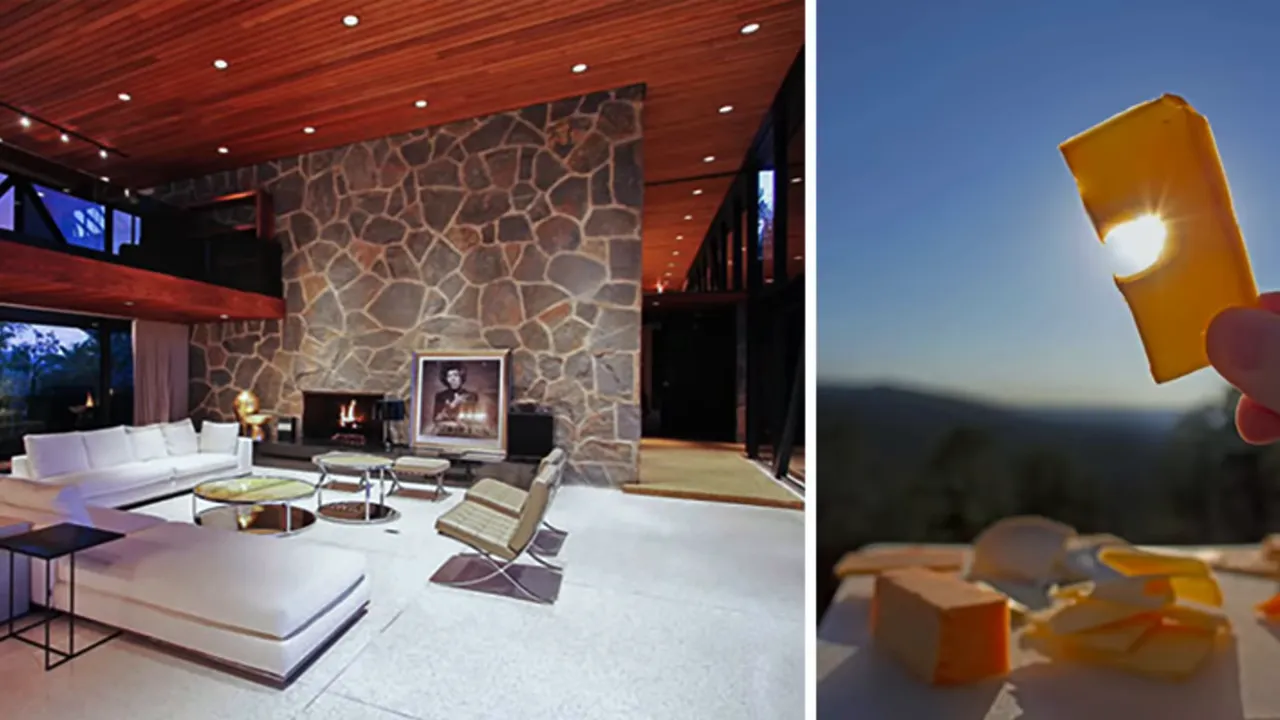
Regional maintenance and material notes for Utah properties
Utah's climate diversity—from high alpine environments to arid desert valleys—affects material selection, exterior color fading, and maintenance frequency. Light-colored exteriors reflect heat in hot southern Utah summers, reducing thermal stress. Darker finishes may accelerate exterior degradation in intense sun. Interiors near ski areas or high-elevation locales require robust humidity and finish strategies due to snow melt and heated interiors.
Specific maintenance considerations:
- Hard water and matte black fixtures: regions with mineral-heavy municipal water can leave more visible residue on matte black finishes. Homeowners should weigh water treatment options and choose finishes accordingly.
- Exterior paint and UV exposure: select paint systems rated for UV resistance for southern Utah homes where sun exposure is intense. Cooler climates with frequent freeze-thaw cycles near mountain towns may benefit from breathable, flexible coatings to prevent peeling.
- Window frames and contrast: black window frames contrast beautifully with landscape; however, the color choice should account for heat absorption, cleaning frequency, and compatibility with other facade components.
Staging and decorating tactics that save renovation costs
Decorating is a cost-effective tool to refresh a property before listing. Simple, targeted updates often deliver a higher return on investment than structural renovations when the objective is attracting buyers or improving tenant satisfaction.
Cost-conscious staging strategies for Utah homes:
- Paint refresh with complex creams and pale neutrals: changing wall paint to a subtle warm neutral can dramatically change the perceived value and mood of a space without major expense.
- Swap hardware and lighting: replacing drawer pulls, cabinet knobs, and a few light fixtures is a relatively low-cost intervention that shifts perception of age and taste.
- Introduce green as a neutral accent: chartreuse, sage, and muted olive are returning as accessible, versatile neutrals that warm black-and-white interiors and tie into Utah's natural palette.
- Layer textiles and greenery: rugs, pillows, and potted plants create psychological warmth and help buyers see how a space can feel lived in while appearing well maintained.
Investment and resale perspective across Utah markets
Different Utah markets exhibit varying levels of sensitivity to design trends. Luxury properties in Park City may withstand bolder or more curated design choices, provided they align with the lifestyle buyers expect. Conversely, entry-level and family-focused neighborhoods in Salt Lake City, South Jordan, and St. George benefit from broadly appealing, warm, and practical finishes.
Investors and sellers should study recent comparable sales and listing photography to determine how far to lean toward trend-forward choices. When in doubt, a restrained neutral palette with layered accents and high-quality, durable finishes typically broadens buyer appeal and reduces time on market.
Market resources for Utah data include the state government and national market reports, which can be consulted for seasonal trends and economic indicators: https://www.utah.gov and https://www.nar.realtor.
For local property searches and market-specific listings, reference the main Utah real estate portal: https://bestutahrealestate.com
Practical checklist for Utah homeowners considering updates in 2026
- Audit finishes already installed: note where matte black, stark whites, and high-contrast exteriors are present and decide if staged softening can suffice rather than replacement.
- Prioritize lighting: remove unnecessary recessed cans where feasible and add layered table, floor, and wall lighting to create a welcoming atmosphere during evening showings.
- Choose warm metal accents: opt for warm brass or aged brass for fixtures and hardware where longevity and integration matter.
- Paint strategically: pick pale, complex neutrals for walls and reserve bright whites for tile and trim where maintenance is easier and timelessness is paramount.
- Landscape to soften exteriors: use plantings, pathway lighting, and entry accents to make high-contrast facades read as mature and permanent rather than trendy.
Cost versus impact: where to spend renovation dollars
When budgeting for updates before listing or long-term habitation, prioritize interventions that change perception at modest cost. High-impact, lower-cost investments often include lighting edits, paint, and hardware. These choices recalibrate a home's character immediately and can be executed in days rather than months.
More substantial expenditures, such as changing plumbing fixtures or re-siding, may be worthwhile for long-term retention or if comparative market analysis shows a clear premium for particular finishes in a neighborhood. For investors in Utah, weigh the expected increase in rent or sale price against replacement and maintenance costs specific to local climates and buyer expectations.
Conclusion — Choose finishes that work for Utah and stand the test of time
As 2026 approaches, the design conversation is moving away from stark contrasts, monolithic whites, and ubiquitous matte black fixtures toward warmth, nuance, and layered finishes. For Utah homeowners, buyers, and investors, the most strategic approach balances current taste with local climate realities and resale potential. Prioritizing warm neutrals, thoughtful lighting, durable finishes, and modest exterior palettes will protect value, reduce renovation frequency, and make homes feel welcoming in every season.
When planning updates, start with a maintenance audit and a targeted staging plan. Often, paint, lighting, and hardware changes produce the biggest perceptual improvements for the least expense. For market-specific guidance and local listings, consult reputable Utah real estate resources and market reports to align design choices with neighborhood expectations.
Frequently Asked Questions
What are the most resilient exterior colors for Utah homes that avoid feeling trendy?
Warm neutrals and muted colors inspired by local landscapes tend to age well across Utah. Soft sage, warm taupe, and stone-inspired grays harmonize with mountain and desert backdrops and resist appearing dated. Avoid extremes of pure black and stark white as overarching schemes. Accent darker trims more selectively and use materials such as natural stone and cedar to anchor aesthetic decisions.
Are matte black faucets a bad investment in Utah because of hard water?
Matte black finishes can reveal mineral deposits more readily in regions with hard water. If replacing fixtures is considered, choose finishes that balance desired style with maintenance realities. Warm brass and satin nickel often tolerate cleaning and hard water better and integrate with a wider variety of design schemes, yielding fewer perceived maintenance issues for buyers and renters.
How many recessed lights should a typical Utah living room have?
Most living rooms function better with minimal recessed lighting. A rule of thumb is to limit recessed fixtures to one or two if required for task lighting, and rely primarily on layered sources: floor lamps, table lamps, and wall sconces. Kitchens and some bathrooms will still need focused overhead lighting. Layering enhances atmosphere and reduces the visual harshness of too many ceiling lights.
What paint selection approach works best when staging a Utah home for sale?
Select pale, complex neutrals rather than stark whites to create an inviting, versatile backdrop. Neutral walls should flatter furnishings and regional light while allowing buyers to imagine personal decor. Reserve white tiles and countertops for durable, timeless surfaces and coordinate wall neutrals to those core materials. A well-chosen neutral often increases listing photos' warmth and buyer interest.
Can interior decorating steps make a black and white home feel current without major renovations?
Yes. Introducing warm colors and layered textures softens high-contrast interiors quickly. Add textiles in earthy tones, warm wood accents, brass light fixtures, and plants to introduce color without structural change. These styling moves are cost-effective and can refresh a home for listing photos or daily enjoyment.

